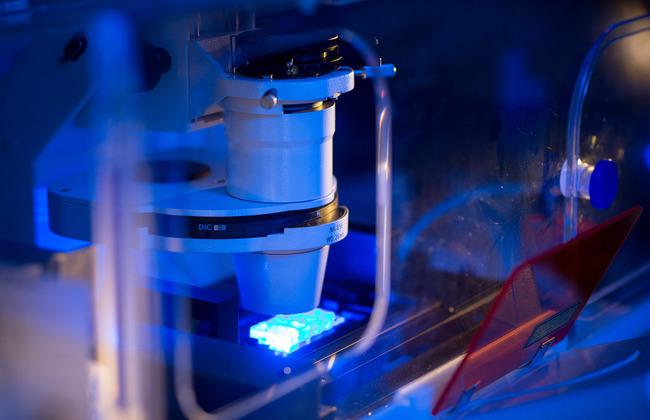EU Consortium imSAVAR: Innovative Approaches to Safe Immunotherapies – The Paul-Ehrlich-Institut Presents Two Studies
- The Paul-Ehrlich-Institut is intensively involved in several subprojects within the EU consortium imSAVAR.
- The results from two review articles on Institute-led subprojects regarding the mechanisms of immune-mediated side effects are now available: "Revival of recombinant IL-2 therapy – approaches from the past until today" and" Analyzing IL-2-induced vascular leakage with an irAOP as tool".
Quote Dr Patricia Gogesch
Press Release
The EU consortium imSAVAR (Immune Safety Avatar) wants to make immunotherapies safer. The evaluation of these therapies' efficacy and safety before first use in humans (preclinical studies) remains a particular challenge. Preclinical model systems must be further developed and new biomarkers must be identified to detect side effects at an early stage and reduce their severity. To this end, the consortium uses "immune-related adverse outcome pathways" (irAOPs) as a central tool. A special issue of the Journal of Immunotoxicology 2024 reports on this approach in 10 articles. The Paul-Ehrlich-Institut presents two of these overview articles in this press release.
 Source: A.Buck/Paul-Ehrlich-Institut
Source: A.Buck/Paul-Ehrlich-Institut
"Revival of recombinant IL-2 therapy – approaches from the past until today"
In this article, the researchers summarise the past uses of recombinant human interleukin-2 (recIL-2) therapy and its side effects, explain the molecular basis of the dual mode of action of interleukin-2 (IL-2), and give an overview of new recIL-2 molecules and delivery systems that are currently being developed.
IL-2 was one of the first cytokines discovered. It plays a central role in the function of T cells. Early on it was shown that IL-2 can activate certain immune cells, which in turn are able to fight cancer cells. RecIL-2 was one of the first anti-cancer immunotherapeutics to receive a marketing authorisation. Although it has been shown to be effective against some cancers, it is only used to a limited extent due to serious systemic side effects.
Nevertheless, the therapeutic potential of recIL-2 is still recognised today: it can stimulate the immune system, which is beneficial in cancer treatments, or facilitate the downregulation of immune responses, which can be used for treatment of inflammatory conditions such as autoimmune diseases.
recIL-2 therapy continues to be highly interesting due to this diverse range of effects. New, modified recIL-2 compounds show improved efficacy and safety in preclinical and clinical studies.
Original Publication
Roser LA, Sommer C, Ortega Iannazzo S, Sakellariou C, Waibler Z, Gogesch P (2024): Revival of recombinant IL-2 therapy – approaches from the past until today.
J Immunotoxicol Dec 10 [Epub ahead of print].
Text
"Analyzing IL-2-induced vascular leakage with an irAOP as tool"
One of the most common side effects of IL-2 immunotherapy is vascular leakage. The aim of this approach was to use a case study to gather knowledge about both vascular leakage in general and IL-2 therapy in particular and thus identify knowledge gaps.
The case study provides an overview of the development of vascular leakage in the context of high-dose IL-2 therapies from an immunological point of view. Using an "immune-related adverse outcome pathway" (irAOP), the case study identifies knowledge gaps and potential biomarkers that serve as a basis for ongoing and future experiments. The insights gained can help to improve the safety of IL-2-based immunotherapies and is intended to promote the understanding and prevention of vascular leakage as a critical side effect.
When vascular permeability is pathologically increased, blood plasma and plasma proteins emerge from the blood vessels and enter into the underlying tissue. This can culminate in a condition known as capillary leak syndrome, a serious and often underdiagnosed disease with a mortality rate of 20 to 30%. Increased vascular permeability can occur as a serious side effect of immunotherapies and can lead to additional side effects, including organ failure. Although the biology of endothelial cells, the cells that line the vascular system, and possible influencing factors behind the vascular leakage have been researched for years, the exact mechanisms that lead to increased vascular permeability are still unclear.
Original Publication
Gogesch P, Ortega Iannazzo S, Zimmermann T, Villenave R, Waibler Z (2024): Analyzing IL-2-induced vascular leakage with an irAOP as tool.
J Immunotoxicol Dec 10 [Epub ahead of print].
Text
Background – imSAVAR Project
Innovative Methods – Making Signalling Pathways Visible with irAOPs
The goal of the EU consortium imSAVAR (Immune Safety Avatar) is to create a non-clinical representation of the effects of immunomodulatory therapies on the immune system. With that goal in mind, a theoretical tool was used to map the key events of immune-related adverse outcome pathways (irAOPs). In the field of toxicology – the study of poisons – adverse outcome pathways (AOPs) are already routinely created to represent biological cascades that result in toxicity. This approach is used for purposes such as risk assessments and regulatory decision-making.
irAOPs were created by the imSAVAR consortium for specific immunotherapies as case studies. Examples of their applications included
- identifying and analysing gaps (e.g. unknown mechanisms underlying a side effect),
- developing measures to fill those gaps,
- and creating a knowledge platform where different partners with varying areas of expertise can work together.
The Paul-Ehrlich-Institut's Research Commitment to the EU Consortium imSAVAR
Since the start of the EU consortium imSAVAR project on 1 December, 2019, the Paul-Ehrlich-Institut has actively participated in the consortium's research in several subprojects. The Institute's imSAVAR participation is led by Professor Zoe Waibler, Acting Vice President and Head of the Product Testing Immunological Medicinal Products Section, along with Dr Patricia Gogesch and Samira Ortega Iannazzo, both from the Research Immunology Section. Their focus is on investigating mechanisms underlying increased vascular leakage. Vascular leakage can occur as an immune-mediated side effect of immunotherapies. The Paul-Ehrlich-Institut's intensive research commitment to the EU consortium imSAVAR is also reflected in the fact that the research team participated in four of the 10 total articles published in the special issue of the Journal of Immunotoxicology 2024.
top



